Your Cart

Flowers to Grow for Beginner, Intermediate, and Advanced Gardeners
Identifying low, medium, and high-maintenance flowers for your garden
Whether you’re an expert gardener or just dipping your toe in the water, it’s always exciting to add new flowers to your home garden. But with so many varieties to choose from, it can be difficult to know what the right flower to plant is. Worry not – Weed Man has got you covered! We have compiled a list of flowers based on the amount of maintenance they require to grow, so that you can choose self-sufficient flowers for a low-maintenance garden, or finicky blooms for gardens that need a challenge.
Low-Maintenance Flowers
Perhaps you’re a new gardener, excited to earn your green thumb but not quite sure where to start. Or maybe you’re an experienced gardener, looking for a low-maintenance, no-fuss addition to your already busy garden. Whatever your skill level, we’ve compiled a list of flowers that require relatively low maintenance to have your garden effortlessly flourishing in no time.
1. Peonies
Peonies are a popular choice for florists and brides alike, and are often sold at farmers markets through the summertime. Peonies bloom beginning in late spring and into early summer, making them a perfect flower to transition into a new season with.
Peonies thrive in a rich, well-drained soil that is neutral or slightly alkaline, and they love full sun. Aside from that, peonies don’t require too much effort to maintain. Just be sure to plant them far enough apart and provide structural support if necessary.

2. Buddleia
Buddleia, also known as “butterfly bush,” is recognized for its ability to attract – you guessed it! – butterflies. These plants come in a variety of sizes, and require very minimal care. Give these plants a home in the sun with an average amount of moisture and they will withstand even the harshest conditions, with the one exception being very cold weather.
However, you’ll want to keep in mind that these plants can spread very quickly on their own, so be sure to remove any extra flowers that may fall before they are able to seed.
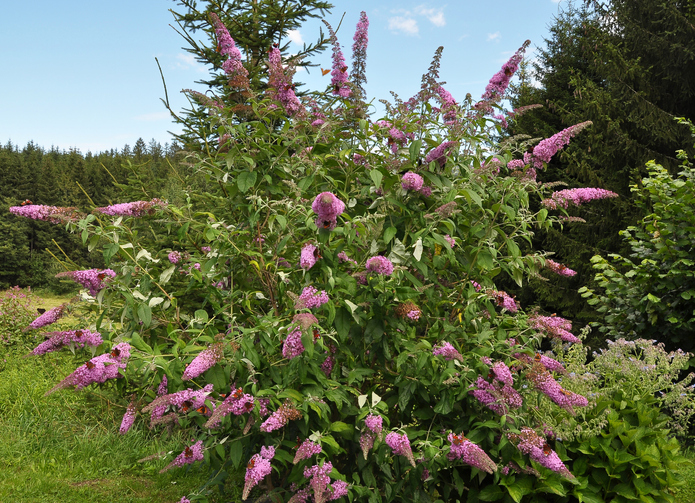
3. Kalanchoe
Kalanchoe is a tropical succulent that is native to Madagascar and tropical Africa. While some variations can grow up to 6 metres (or 20 feet) tall, most grow up to 1 metre (3 feet). With a moderate amount of sunlight and water, these plants commonly survive for up to seven years. Best of all, they will happily grow in an indoor garden.
Fun fact: In 1979, Kalanchoe became one of the first plants to be sent into space!

Medium-Maintenance Flowers
If you have experience with gardening but aren’t quite ready for a major challenge yet, keep reading to find the right plant for you!
1. Balloon flower
Balloon flowers get their name from the balloon-like buds that they sprout before turning into star or bell-shaped flowers. Balloon flowers do not require too much maintenance, but you will need to be cautious in handling them as their roots can be easily damaged. For a lush garden full of balloon flowers, you will want to ensure that you regularly deadhead these plants throughout the summer.
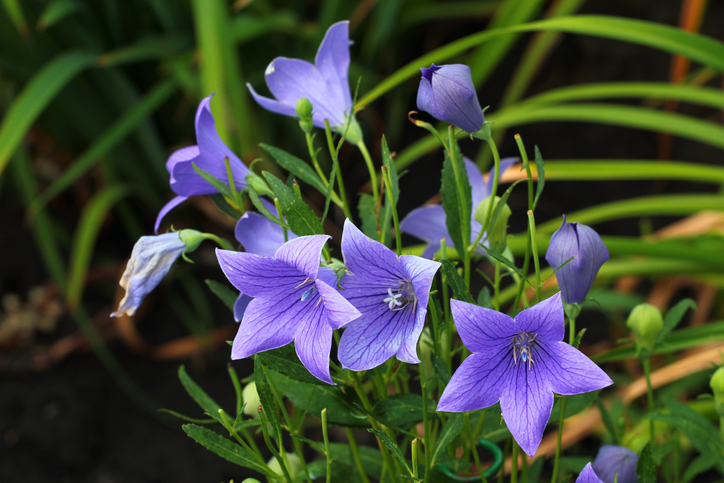
2. Dianthus
Dianthus -- also commonly known as carnations, pinks, or sweet Williams -- are another popular flower for mid-level gardeners to grow. While these flowers are not high-maintenance, they will require some work to keep happy. Dianthus needs full sun and well-drained soil, and will not survive in wet soils. Gardeners will need to apply layers of compost and mulch to the soil each spring and divide the plants every three to four years.

3. Orchid
Orchids are another very popular plant species, and are often given as gifts. While orchids can be grown outdoors, they are better suited for indoor habitation in most climates.
Most orchids prefer room-temperature but humid environments, with a moderate amount of light. The trick to keeping an orchid happy is to avoid overwatering – you should only water an orchid if the top few inches of soil are completely dry. Finally, a flowerpot with adequate drainage holes will allow your orchid to get the air that it needs while avoiding root rot.
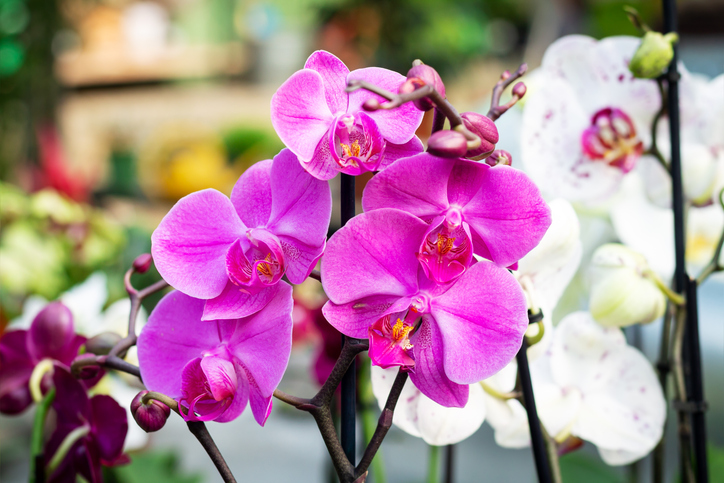
High-Maintenance Flowers
So you’re looking for a challenge… we’ve got you covered! The next set of beautiful flowers can be finicky, but they are well worth the extra effort.
1. Azalea
Known as the “Royalty of the Garden,” azaleas are beautiful, but can be high maintenance. These flowers require soil that is cool and damp at all times. Azaleas thrive in areas that allow for some bright light, as well as occasional shade.
The best time to plant azaleas is in the spring, as the strong summer sun can burn new leaves, and too much winter shade can deprive them of oxygen.
Azaleas do commonly face leaf spots, root rot, and petal blight, but good drainage and mulch applications can help prevent these issues, leaving you with a beautiful flowering plant.
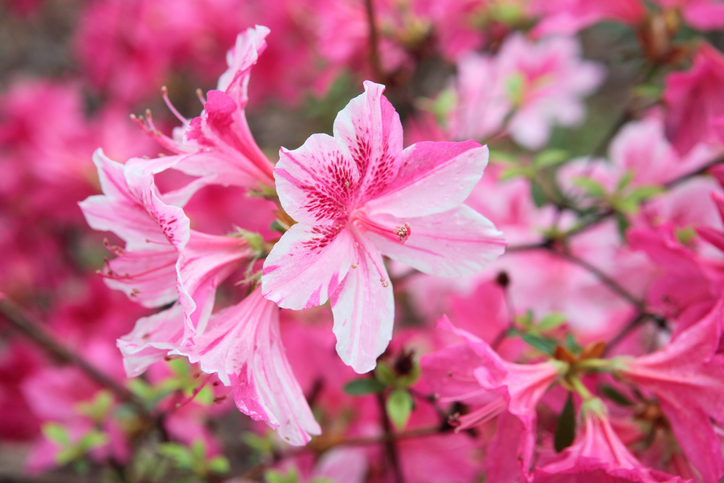
2. Gardenia
Gardenias are another beautiful flower that will require a little extra work. For one, they are not a fan of colder temperatures, and will begin to die back to the roots under temperatures colder than 50 to 55 degrees Fahrenheit (10 to 12 degrees Celsius). They also require high humidity and a good amount of sunlight, which makes them better suited to warmer regions.
In terms of soil, gardenias thrive in soil that is acidic, with a pH around 5.5, and no higher than 6.0. They require a healthy amount of water to keep the soil damp and retain humidity, but can also become waterlogged fairly easily, so good drainage is important.

3. African violet
African violets are another stunning flower that, with a little extra care, can make a great addition to your blooming collection. While they can be grown outside, they are best to plant inside as any water that is left on their leaves can leave brown spots. It is also important to regularly remove dead leaves and flowers to reduce the risk of rot.
African violets grow best in temperatures around 70 degrees Fahrenheit (21 degrees Celsius), but any temperature below 60 degrees Fahrenheit (15 degrees Celsius) can be detrimental. These plants also enjoy sunlight, though not directly.
Like gardenias, African violets prefer soil that is humid and warm, though they do not like to sit in water. They even have their own special fertilizer, which should be used on the soil every other week.
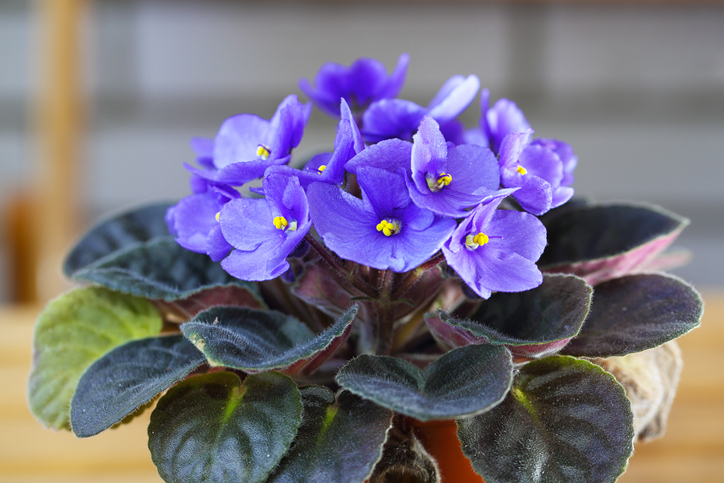
And there you have it – a simple flower guide for beginner gardeners, experts, and everyone in-between.
Brought to you by Weed Man Lawn Care.
 English (USA)
English (USA) Français (CANADA)
Français (CANADA)